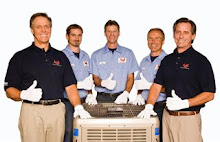NEWS from CPSC
U.S. Consumer Product Safety CommissionCPSC Announces Recall of Furnaces in California
Although this recall occured in Sept. 2000, ASI heating and Air technicians regularly find recalled furnaces still being used today. Don't trust your familys safety to the "Handyman" have a properly trained and certified service technician look at your gas furnace to assure it is safe to operate.
NOTE: Opportunity for remedy from litigation has expired.
CPSC has received more than 50 reports of fires associated with the 140,000 horizontal furnaces manufactured by Consolidated Industries Inc.
Private labelers sold these furnaces in California under the following brand names and model numbers, which are written on a label on an outside panel of the furnace.
CPSC issued a safety alert warning about these furnaces in September 2000. Consolidated Industries (formerly Premier Furnace Co.), which was liquidated under Chapter 7 bankruptcy laws, manufactured approximately 140,000 of these furnaces for sale in California between 1983 and 1994 under many different brand names. About 110,000 of these furnaces were manufactured and distributed under the Premier/Consolidated labels.They include the brand names Consolidated, Premier, Addison, and Weatherking. They are not covered by this recall program. After Consolidated filed for bankruptcy, class action was pursued, and a settlement was ultimately reached in early 2002. However, claimants were required to file a claim by January 13, 2003. Potential claimants who missed the deadline have no remedy available. Even though no remedy is available, CPSC staff believes that the Consolidated, Premier, Addison, and Weatherking furnaces are defective and should be replaced.
These furnaces are normally installed in attics, although some may be installed in crawl spaces. The great majority of these furnaces were installed in homes in California. Some, however, were installed in home in Nevada, near the California border.
The Commission is warning consumers to have their gas-fired furnaces inspected by a licensed heating contractor to determine whether the furnaces are subject to this safety alert. The contractor also should determine whether the burners and/or heat exchangers of units are damaged, or whether wood under or near the furnaces shows signs of damage, such as charring or blackening. If this is the case, the furnace should be replaced immediately.
COMPANY NAME // TRADE NAME // MODELS
Amana Company // Amana //
GSE50DN3X
GSE75DN3X
GSE100DN5X
Bard Manufacturing // Bard //
ESG040D36B
ESG050D36B
ESG060D36B
ESG060D48B
ESG080D60B
ESG100D60B
ESG120D60B
ESG140D60B
ESG050D36D
ESG060D48D
ESG075D48D
ESG080D60D
ESG100D60D
ISG060D36AX
ISG080D48AX
ISG100D60AX
ISG120D60AX
Carrier Corporation // Sunburst by Carrier Southern California //
HAC 040N(D,E, or F)3RXC
HAC 050N(D,E, or F)5RXC
HAC 050ND3RXD
HAC 060N(D,E, or F)4RXC
HAC 075N(D,E, or F)4RXC
HAC 080N(D,E, or F)5RXC
HAC 100N(D,E, or F)5RXC
Goettl Air Conditioning Inc. // American Best Goettl //
HAC 040N(D,E, or F)3RCX
HAC 050N(D,E, or F)3RCX
HAC 040N(D,E, or F)3RXD
HAC 050N(D,E, or F)3RXD
HAC 040N(D,E, or F)3RXC
HAC 050N(D,E, or F)3RXC
HAC 060N(D,E, or F)4RXC
HAC 075N(D,E, or F)4RXC
HAC 080N(D,E, or F)5RXC
HAC 100N(D,E, or F)5RXC
HCC 040N(D,E, or F)3RX
HCC 050N(D,E, or F)3RX
HCC 060N(D,E, or F)4RX
HCC 075N(D,E, or F)4RX
HCC 100N(D,E, or F)5RX
HBA 040N(D,E, or F)3RX
HBA 060N(D,E, or F)3RX
HBA 080N(D,E, or F)4RX
HBA 100N(D,E, or F)5RX
HBA 120N(D,E, or F)5RX
Goodman Manufacturing Company// Franklin Electric; Goodman; GMC; Hamilton Electric; Janitrol; Johnstone; Liberty //
HBA 040 ND 3(X, RX, XC or RXC)
HBA 060 ND 3(X, RX, XC or RXC)
HBA 080 ND 4(X, RX, XC or RXC)
HBA 100 ND 5(X, RX, XC or RXC)
HBA 120 ND 5(X, RX, XC or RXC)
HCA 040 ND 3(X, RX, XC or RXC)
HCA 060 ND 3(X, RX, XC or RXC)
HCA 080 ND 4(X, RX, XC or RXC)
HCA 100 ND 5(X, RX, XC or RXC)
HCA 120 ND 5(X, RX, XC or RXC)
HCA 140 ND 5(X, RX, XC or RXC)
HCC 040 ND 3(X, RX, XC or RXC)
HCC 050 ND 3(X, RX, XC or RXC)
HCC 060 ND 4(X, RX, XC or RXC)
HCC 075 ND 4(X, RX, XC or RXC)
HCC 080 ND 5(X, RX, XC or RXC)
HCC 100 ND 5(X, RX, XC or RXC)
Heat Controller Inc. // Comfort-Aire //
GSH40-T3N-X
GSH50-T3N-X
GSH60-T4N-X
GSH75-T4N-X
GSH80-T5N-X
GSH100-T5N-X
The Trane Company //Trane American Standard //
THN050A936A
THN060A948A
THN075A948A
THN100A960A
